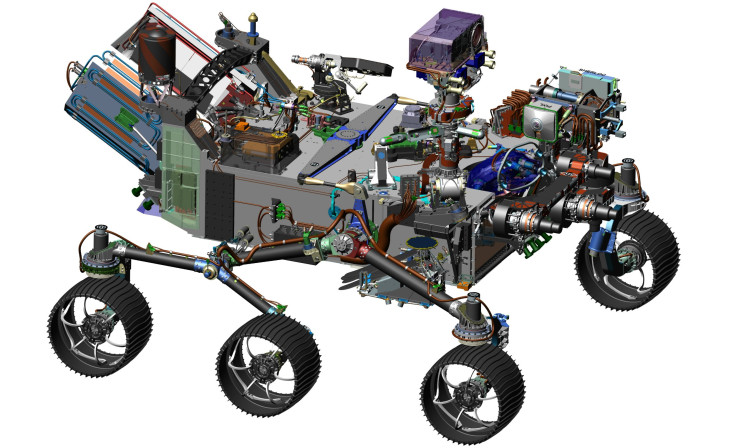Mars 2020 Mission: NASA’s Life-Hunting Rover Passes ‘Major Development Milestone,’ Design And Construction To Begin Soon

NASA plans to send its next rover to Mars in the summer of 2020, so that it arrives on the red planet in February 2021, the space agency said Friday. The “Mars 2020” rover, which borrows a lot of its design features from its wildly successful predecessor Curiosity, has cleared an extensive review process and is now ready to enter the final design and construction phase.
“The Mars 2020 rover is the first step in a potential multi-mission campaign to return carefully selected and sealed samples of Martian rocks and soil to Earth,” Geoffrey Yoder, acting associate administrator of NASA’s Science Mission Directorate in Washington, said in a statement. “This mission marks a significant milestone in NASA’s Journey to Mars — to determine whether life has ever existed on Mars, and to advance our goal of sending humans to the red planet.”
Mars, despite its inhospitable climate and heavily irradiated surface that would kill humans in a matter of minutes, has been a source of unending fascination for scientists and science fiction writers alike. In recent years, this fascination has translated into concrete plans for a manned mission to the red planet.
However, before that can be done, there are several key obstacles — most of them related to the present-day habitability of Mars — need to be resolved. This is where the Mars 2020 mission is expected to play a crucial role. The rover will not only look for signs of past life on the red planet, it will also, using its array of science instruments, conduct investigations into the usability and availability of Martian resources, including oxygen, to prepare for manned missions.
“Mars 2020 will carry an entirely new subsystem to collect and prepare Martian rocks and soil samples that includes a coring drill on its arm and a rack of sample tubes,” NASA said in the statement. “About 30 of these sample tubes will be deposited at select locations for return on a potential future sample-retrieval mission. In laboratories on Earth, specimens from Mars could be analyzed for evidence of past life on Mars and possible health hazards for future human missions.”
The similarities between Curiosity and Mars 2020 go well beyond superficial appearance. Much like Curiosity, Mars 2020 will also use a parachute-and-sky-crane landing system. However, it will be provided with enhancements that would enable it to land in a more challenging and rugged terrain.
“As it is descending, the spacecraft can tell whether it is headed for one of the unsafe zones and divert to safe ground nearby,” Allen Chen, Mars 2020 entry, descent and landing lead at NASA's Jet Propulsion Laboratory in Pasadena, said in the statement. “With this capability, we can now consider landing areas with unsafe zones that previously would have disqualified the whole area. Also, we can land closer to a specific science destination, for less driving after landing.”
Another key feature of the spacecraft is that it would be equipped with a suite of cameras and a microphone that will be used to capture imagery and sounds of the entry, descent and landing sequence — something that scientists have never before seen or heard.
So far, four rovers — Sojourner, Sprit, Opportunity and Curiosity — all sent by NASA, have successfully landed on Mars. Two — Opportunity and Curiosity — are still operational. In addition to the Mars 2020 rover, NASA also plans to send a robotic lander — InSight — to the red planet in May 2018.
The InSight mission — which stands for Interior Exploration using Seismic Investigations, Geodesy and Heat Transport — aims to understand how all rocky planets in our solar system, including Earth, formed and evolved. This, along with the Mars 2020 mission, is part of NASA’s ambitious Mars Exploration Program, which aims to eventually put humans on the red planet and with the goal of eventually establishing an extraterrestrial colony.
© Copyright IBTimes 2024. All rights reserved.












